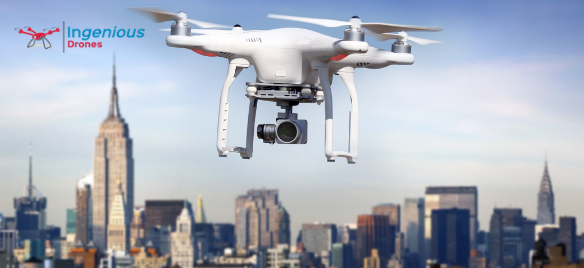The building owner, lenders, constructors, and insurance industries all benefit from a building inspection. It displays the current state of the building, its value, about whether or not there are any structural flaws. Inspection reports are used for a variety of purposes, including valuations, insurance, marketing, and maintenance.
The majority of individuals are afraid of the numerous dangers that come with building inspections. These include dangers posed by equipment and tool faults, building problems, weather, electrical lines, and other factors. Drone-based inspections, on the other hand, are changing all of this since they can provide safe, faster, and more cost-effective building inspections.
- The collapse of the structure: Due to the increased weight of the building inspectors and equipment, older or poorly constructed buildings are more vulnerable to collapse. This is not only unsafe, but it may also result in a complaint against the building owner. Buildings that have not been examined in a long time have a higher risk of collapse, thus extra precautions should be taken.
- More time is required: An inspector will spend a significant amount of time evaluating the wall and roof surfaces, as well as other structural aspects of the structure, due to the manual nature of the inspection. Inspectors will have to spend more time installing and repositioning the climbing gear and the structure. This can be exhausting, resulting in exhaustion and, on rare occasions, bad inspection or accidents.
- Building inspections are costly to conduct: A licensed and certified inspection technician is always hired. The inspector, as well as the workers, must be covered by insurance. To reach and check the interior and exterior and roofs of huge, tall commercial properties, large and complex machinery is required. Due to all these factors, more home lighting owners would prefer to avoid costly building inspections.
- Lack of space: When a building is located in a populated region, deploying heavy inspection equipment at the top or on the ground is typically a challenge. Due to the lack of space, regular checks are sometimes skipped, increasing the danger of accidents and problems with neighboring.
- Missing out on hidden details: When performing tests on some other areas, the inspection equipment may be put in places with problems, and these sites may be left out. Some regions of elaborate patterns may be unavailable even with the best technology and tools. Because the inspector will not be able to adequately evaluate the surface and will miss certain potential or current flaws.
- Hazards accessing the roof and large walls: When climbing the top with a ladder, a crane, or any other technique, there are various safety concerns. If, for example, the ladder is not correctly secured, the risk of falling is great. Defective or improperly attached Skipper Chairs or hanging Swing Stages can also result in serious incidents. Unstable walls can enhance the danger of accidents due to unsteady equipment grip.
Conclusion: When it comes to conducting building inspections, there are always problems. The issues placed inspectors, employees, and building occupants in danger of accidents, electricity, fires, and other safety concerns, regardless of the size or kind of structure.
While it is impossible to prevent all problems, using drones to conduct residential, commercial, and industrial inspections is one method to improve the safety and speed of the process. In addition, these will reduce inspection expenses and give more complete results.


Recent Comments